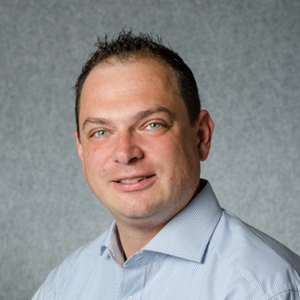
How to scale agile projects
Insights from the Project Management Symposium in Vienna
The PM Symposium at the University for Applied Sciences BFI Vienna has been held for the ninth time this year. Just like its previous iterations, this year’s event offered great insights from high-profile industry experts, consultants, and researchers. Split into four streams, each focused on different aspects related to (Multi-) Project Management, the symposium provided a platform to discuss and share experiences among peers. The key questions this year revolved around the challenges of managing multiple projects in an agile environment.
The symposium offers a great fusion between theory and practice, as established researchers and top innovation leaders in the field of project management get together to exchange ideas. As is to be expected – and project managers tend to be well aware of – not everyone is on the same page all the time. Whether their background is in consulting, research or in the corporate world, experts will hold and defend different opinions. The interesting bits occur when opinions align – just as well as when they differ strongly. This is where symposia like the one in Vienna offer an amazing benefit: you’ll find a plethora of invaluable perspectives, all gathered in one place.
Agile multi project management – challenges and best practice
They have progressed way past the point of being a mere trend: agile methodologies have transformed the project management landscape and are here to stay. How do you run massive agile projects with efforts amounting to several man-years? Can they even be operated in an agile manner?
Even though the specifics vary between different industries and for each company, there’s a lot to learn by establishing and extending the dialogue between project managers working in different industries and environments. Some requirements are universal, such as best practices while presenting the current project status to stakeholders. Other insights can be put to use implicitly by providing a change of perspective, which, in turn, offers the chance to explore and learn.
Applied correctly, agile methodology reduces the overall risk for a project, as tangible results are available sooner within the cycle. Stakeholders are able to provide feedback earlier on and the vision for the final result gets more aligned between project owners and stakeholders as the project progresses.
Agile does not necessarily equal agile
One of the major experiences most attendees and speakers could agree on, was the fact that operating “agile” almost never means the same thing in two different companies. Implementing agile project management never goes exactly by the book and as organizations are as diverse as the people who form them, each organization applies it differently. This was one of the major takeaways for our attendees and something we have been faced with while applying agile methodology at NTS Retail: you can’t always stick strictly to the curriculum. There is a need and the space for flexibility - one of the main reasons why you’d want to switch to agile in the first place.
Roles are a key element in any organizational structure and they are just as well in agile environments. But for most companies switching to agile comes in tow with a transformation process. So, it is particularly important to keep a close eye on roles and responsibilities and review them constantly. As is natural to a change process, roles will be transforming along the way. Some will turn obsolete as others emerge. Acceptance is not a given in these situations and needs to be nurtured and developed throughout the process.
How to handle changes? It’s not just the software that has to change
Change requests are a well-known challenge to software developers and they succinctly represent a dichotomy within the economy of the information age: software products need to be well-conceived and planned for while still maintaining the ability to adapt to increasingly dynamic surroundings. It is not unheard of for a software product to face the threat of becoming outdated between the time of its conception and its delivery.
“Changes are welcome!” as a principle in agile project management articulates the understanding that involving the stakeholders early on in the production cycle will aid in creating a more complete product with better acceptance levels. But it’s not just the software and the development cycle that has to be agile. The agile mentality needs to be present with all stakeholders. Ideally, you want the spirit to spread to all parts of the organization. Changes need to be advertised proactively and communicated properly. Ideally in a way that caters to all parties involved, their personality traits as human beings and characteristics pertaining to their organizational role.
Going agile at NTS Retail
For us at NTS Retail, the decision to evaluate and adopt an agile methodology is rooted in our role as a vendor for corporate-grade software solutions. Our team is always looking for ways to optimize our production cycle in order to create satisfying and viable solutions, tailored to our target markets. Naturally, this means that extending our view beyond the scope of our daily routine is a necessary and welcome way to seek input and learn from others. For us, this is a big part in the process of switching to an agile structure within our teams and our organization.
Interested in receiving regular updates on product developments and best practice in digital business transformation for telcos? Follow us on LinkedIn and Twitter to keep up-to-date on NTS Retail!

